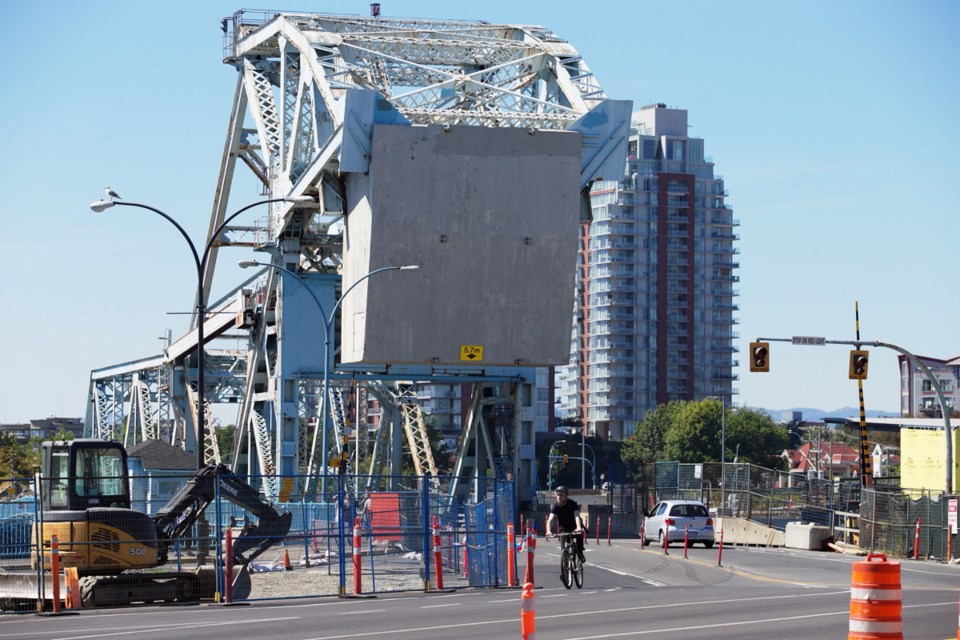Steel for the new Johnson Street Bridge is nearing completion in China and is scheduled to arrive in Victoria next May, Victoria councillors have been told.
There seems to be little activity at the bridge construction site, as the focus for the moment is very much on completing the steel, project director Jonathan Huggett said in a quarterly project update.
“I haven’t come to tell you that there are any significant problems with the bridge in any shape or form, and I won’t be asking for any more money,” Huggett said.
Jiangsu Zhongtai Steel Structure Co. Ltd. (ZTSS) is making steel for the bridge in China — a process that has been rife with problems. Fabrication was halted in July 2014 after inspections found the steel was not being built to design and there were significant flaws, including defective welds. Months worth of steel was rejected. The city demanded improved oversight and, according to Huggett, it has paid off.
“The quality assurance process on this project is like no other,” he said. “We can have great confidence that when this product shows up, it will meet all the requirements.”
Huggett said there are three main steel components:
• The main bascule span being fabricated at ZTSS in JingJiang, near Shanghai. It includes the rings, trusses, counterweights, outriggers and decks.
• The span support structure being fabricated by QuayQuip in Tianjin. This is the interface between the ZTSS work and the moving machinery.
• The falsework, also being fabricated by ZTSS, is the temporary structure that will support the various pieces while they are being assembled in Victoria.
The bridge will have a section that lifts, allowing taller vessels to pass.
Huggett said the original plan was to have the bridge lift rings shipped to Victoria by the end of January, and placed in their support cradles on site. The plan now is to carry out assembly in China.
“It was decided it was much less risk and a much better environment to work in to do it in the plant in China,” Huggett said.
As a result, the rings will arrive later, but “this is not a delay to the project,” he said. “It is simply a re-sequencing of the work.”
The bridge is scheduled to be open to traffic by the end of 2017.
In May, council approved $8.2 million in additional funding for the project, bringing the total to $105.1 million. Total spent to date is $76.6 million, and the remaining unallocated contingency is almost $2 million.
An unknown expense is the cost of fendering — bumpers to prevent vessels from hitting the structure — for the bridge’s north pier, which was not included in the project budget.
Huggett said design of the north pier fendering is underway.
“We want to make sure what we are proposing is absolutely necessary,” he said. “On the one hand, that bridge has to be protected. On the other hand, I don’t want to get involved in a huge unnecessary project that cannot be justified. So we’re taking our time making sure that we spend only what we need to spend to properly protect the bridge.”



